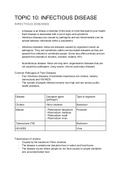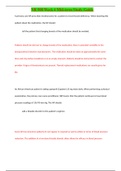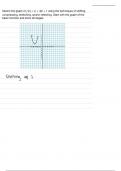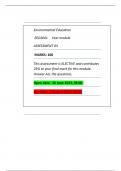Summary
Summary Unit 10- Infectious Disease (9700) Biology CIE
- Institution
- CIE
INFECTIOUS DISEASES, Common Pathogens & Their Diseases, Cholera, malaria, Tuberculosis, HIV/AIDS, ANTIBIOTICS, Penicillin, How penicillin affects bacteria, Resistance to antibiotics: an outline, Vertical transmission, Horizontal transmission, Consequences of antibiotic resistance, Reducing antibiot...
[Show more]








